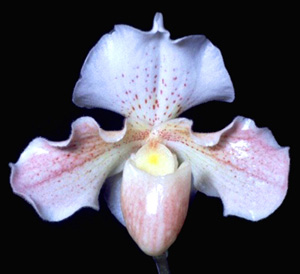Glistening orchids cling to the towering trees surrounding
us in the swirling mist of the Costa Rican cloud forest. More than 1,200
species of these beautiful blooms can be found in this enticing little
country which has made the orchid its national flower.
Orchids, in all their splendor, cover a full spectrum of colors and patterns,
from delicate pastels to vibrant full-bodied hues, and range in size
from tiny plants an inch high with flowers so small that we can barely
see them, to 50 foot long vines with blossoms spanning more than a foot—some
bloom only for a day while the blossoms of others last for weeks.
But what actually is an orchid and why do people find them so fascinating?
We looked into the nature and history of these exotic plants and came
up with some fascinating facts.
Orchids are the largest family of flowering plants (almost 30,000 wild
species have been classified) and also the most diverse. Although they
can be found in a wide range of habitats—one is semiaquatic and
only its blossoms poke above the water surface, while another grows and
blooms entirely below the ground—the greatest diversity of orchids
can be found in tropical cloud forests. Most of these tropical orchids
are epiphytes—air plants, which grow on the trunks and limbs of
trees. Although they grow on the trees, they are not parasites and only
use the tree as a place to anchor where they can receive light high above
the forest floor—biologists have recorded almost fifty different
orchid species growing on a single tree.
An orchid seed has no food source of its own, but each species has a
symbiotic relationship with one particular fungus—without that
fungus the seed cannot grow.
Just as the colors and sizes of orchids have so much variety, their scents
also cover a wide range—some have no scent at all, others give
off musky decaying smells, and one has the delightful scent of vanilla—in
fact, it is vanilla. The vanilla plant is the only fruit produced by
the orchid family that humans can eat. Centuries ago, the ancient Aztecs
used vanilla to flavor their chocolate drinks. When the Spanish conquistador
Hernando Cortez was offered the drink by the Emperor Montezuma, he was
so impressed that he brought it back to the King of Spain and it soon
became a favorite with the royalty of Europe.
In addition to being designated as the national flower of Costa Rica,
the orchid is also the national flower of Thailand, Singapore, Columbia,
Panama, Indonesia, Brazil, Guatemala, Honduras, Belize, and the Cayman
Islands—a very popular flower indeed.
According to legend, orchids were given their name by the Greek philosopher
Theophrastus, who was a student of Aristotle. The rounded paired bulbs
of one common Mediterranean orchid looked like male organs to him so
he named the plant
orchis, the Greek word for testicle. In medieval
Europe, aphrodisiacal powers were attributed to the plants and their
dried pulverized tubers were used in love potions. Potions made from
younger, firmer tubers were believed to result in the conception of sons,
while potions made from older, softer tubers resulted in daughters.
Click Here for information on our Costa Rica Tours.



